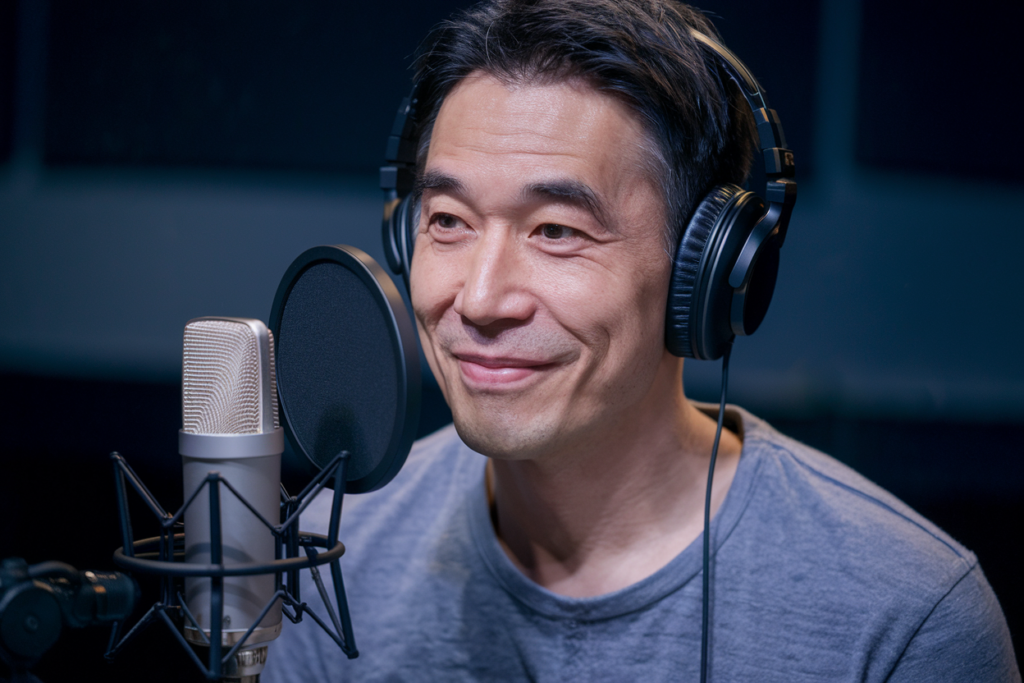Key Takeaways
- Artistry in Dubbing: Japanese dubbing combines technical skill with artistic expression, requiring voice actors to align dialogue with character emotions and mouth movements seamlessly.
- Significance of Lip Sync: Effective lip sync enhances audience immersion and emotional connection, ensuring viewers engage fully with the narrative without distractions from mismatched audio and visuals.
- Challenges in Translation: Achieving perfect lip sync involves overcoming language-specific differences in syllable counts and speech rhythms, necessitating creative script adaptation.
- Key Techniques: Successful dubbing relies on two primary techniques: adapting scripts for natural delivery and matching vocal performances to original character expressions for authenticity.
- Technological Support: Advanced audio editing software, lip sync animation tools, and high-quality recording equipment are essential for refining performances and achieving seamless synchronization.
- Emerging Trends: Future trends in Japanese dubbing include AI integration for enhanced synchronization, remote recording capabilities for diverse talent collaboration, and a focus on emotional authenticity in performance.
Ever wondered how Japanese dubbing artists make their performances feel so natural? Handling lip sync in Japanese dubbing isn’t just about matching words to mouth movements; it’s an art form that requires skill and creativity.
As you dive deeper into the world of voice acting, you’ll discover the challenges faced when adapting content for a different language while maintaining emotional depth. It’s not just about translating dialogue but ensuring that every word aligns perfectly with the visuals. If you’re keen on mastering this intricate process or simply curious about how it’s done, you’re in the right place! Let’s explore tips and techniques that can elevate your understanding of lip sync in Japanese dubbing and transform your projects into captivating experiences.
Overview Of Japanese Dubbing
Japanese dubbing is a meticulous process that combines artistry with technical skill. Voice actors, also known as voice talents or voice artists, play a crucial role in this craft. They’re tasked with bringing characters to life, ensuring that their performances resonate emotionally while matching the timing and expression of the original visuals.
In dubbing, it’s not just about translating dialogue; it’s about capturing the essence of each character. Voice over talent must consider cultural nuances and emotional depth when delivering lines. The challenge lies in maintaining lip sync while conveying authenticity—every word needs to align perfectly with mouth movements on screen.
The selection of a skilled voice actor can significantly impact the final product. A talented voice over artist understands how to adjust their delivery based on context, whether it’s a high-energy action scene or a subtle dramatic moment. Their ability to adapt enhances viewer engagement and enriches storytelling.
Moreover, technology plays an important role in this process. Advanced audio editing tools help synchronize speech with animation seamlessly. However, even the best technology cannot replace the human touch brought by experienced voice over actors who infuse personality into their performances.
When considering projects involving Japanese dubbing, think about these elements: effective communication between directors and voice talents ensures clarity in vision. Providing clear direction helps bring out the best performances from voice artists, leading to more captivating content that resonates with audiences worldwide.
By understanding these aspects of Japanese dubbing, you can appreciate the effort behind creating engaging audio-visual experiences. This knowledge empowers you when collaborating on future projects involving localization or adaptation for diverse audiences.
Importance Of Lip Sync In Dubbing
Lip sync plays a crucial role in the dubbing process, directly influencing how audiences perceive and connect with the content. When dialogue aligns seamlessly with a character’s mouth movements, it enhances immersion and credibility. You want viewers to feel like they’re experiencing the story as intended, not distracted by mismatched audio and visuals.
Impact On Audience Experience
Effective lip sync significantly affects audience engagement. When voice actors deliver performances that match on-screen expressions and timing, it creates an authentic connection to the characters. This synchronicity allows viewers to focus on the narrative rather than questioning whether they’re watching a dubbed version. The emotional weight of scenes intensifies when every word resonates with visual cues—it’s all about creating that believable experience.
Challenges In Achieving Perfect Lip Sync
Achieving perfect lip sync presents multiple challenges for voice artists. Different languages often have varying syllable counts or speech rhythms, complicating alignment with original animations. Additionally, cultural nuances can affect how emotions are conveyed through speech patterns and intonations; ensuring these aspects align requires significant skill from voice talent.
Voice actors must adapt their delivery while remaining true to character intentions and maintaining synchronization with animation. Advanced audio editing tools can assist in this process, but nothing replaces the expertise of experienced professionals who understand both technical requirements and artistic expression. Balancing these elements is vital for producing high-quality dubbed content that resonates globally.
Techniques For Handling Lip Sync In Japanese Dubbing
Achieving effective lip sync in Japanese dubbing involves several key techniques that enhance the overall quality of voiceovers. These methods ensure dialogue aligns with character movements while maintaining emotional impact.
Adaptation Of Scripts
Adapting scripts for lip sync requires more than just direct translation. You must consider syllable counts, cultural nuances, and emotional tone. Often, phrases in Japanese may have different lengths compared to their English counterparts. This difference necessitates creative rephrasing to maintain synchronicity with visual cues. Voice actors rely on well-adapted scripts that allow for natural delivery and preserve character integrity within the constraints of lip movements.
Vocal Performance Matching
Vocal performance matching is crucial in creating an authentic experience for audiences. You expect voice actors to capture not only the original character’s emotions but also their unique speech patterns and rhythms. This aspect becomes even more vital when working on animated projects where expressions play a significant role in storytelling. Through practice and collaboration with directors, voice talents refine their performances to align seamlessly with animation, ensuring that every word enhances viewer engagement and immersion.
By focusing on these techniques—script adaptation and vocal performance matching—you can elevate your Japanese dubbing projects, making them resonate deeply with audiences while achieving perfect lip sync.
Technology And Tools Used
Japanese dubbing relies on a variety of technology and tools to achieve effective lip sync. These innovations streamline the process, allowing voice actors to deliver performances that align seamlessly with animated visuals.
Audio Editing Software
Audio editing software plays a pivotal role in refining voice recordings. Programs like Adobe Audition and Avid Pro Tools enable sound engineers to edit dialogue tracks, adjust timing, and enhance audio quality. Such precision ensures that words match character mouth movements closely.
Lip Sync Animation Tools
Lip sync animation tools assist in aligning voiceovers with visual elements. Software such as Toon Boom Harmony or Moho helps animators visualize where characters’ mouths should move based on the spoken dialogue. This alignment enhances the overall viewing experience by ensuring characters appear more lifelike.
Voice Recording Equipment
Quality voice recording equipment is essential for capturing clear, professional audio. High-fidelity microphones and acoustic treatment solutions create an optimal recording environment for voice actors. Properly set up studios minimize background noise, enabling clearer performances that resonate better with audiences.
Script Adaptation Tools
Script adaptation tools streamline the process of modifying scripts for Japanese dubbing projects. Software that allows real-time collaboration among directors and writers facilitates quick adjustments to dialogue while keeping lip sync requirements in mind.
Performance Analysis Software
Performance analysis software aids directors in assessing vocal performances during sessions. Utilizing advanced metrics, these tools help identify areas needing improvement, ensuring each take aligns well with character intentions and emotional depth.
By employing these technologies effectively, creators can produce high-quality Japanese dubbing projects that engage viewers through authentic connections between voices and visuals.
Future Trends In Japanese Dubbing
Japanese dubbing is evolving, and several trends are shaping its future. Technology plays a significant role in this transformation, with advancements enhancing how voice actors deliver performances.
- AI Integration: AI tools streamline the dubbing process by analyzing scripts for optimal lip sync and emotional tone. These technologies assist voice artists in achieving near-perfect synchronization with visuals, making the final product more engaging.
- Remote Recording: The rise of remote recording capabilities allows voice talent to work from anywhere in the world. This flexibility opens up opportunities for collaborations across borders, enabling diverse voices and perspectives to enrich Japanese dubbing projects.
- Diverse Casting: There’s a growing emphasis on casting voice actors who reflect the characters’ backgrounds and experiences. This trend encourages authenticity and cultural accuracy, resonating more deeply with audiences.
- Interactive Dubbing: As interactive media gains popularity, so does the demand for adaptable dubbing techniques that cater to user choices in gaming or streaming platforms. Voice over talent must be prepared to adjust performances based on varying narrative paths.
- Focus on Emotional Authenticity: Audiences increasingly seek emotional depth in storytelling. Voice actors are now tasked with delivering performances that capture subtle emotions effectively, ensuring characters resonate well beyond mere dialogue delivery.
- Increased Collaboration: Enhanced communication between directors and voice actors fosters creativity during production phases, allowing for greater experimentation and innovation within projects.
By embracing these trends, you can stay ahead in the dynamic landscape of Japanese dubbing, creating content that captivates audiences while maintaining high-quality standards in performance and synchronization.
Conclusion
Mastering lip sync in Japanese dubbing is an intricate dance between artistry and technology. As you navigate this complex process, remember that every detail counts from script adaptation to voice performance. Your ability to align dialogue with visuals while capturing emotional depth can transform your project into an immersive experience.
Embrace the tools at your disposal and foster clear communication with voice actors for a seamless collaboration. Stay attuned to industry trends like AI advancements and remote recording capabilities to enhance your work further. By prioritizing these elements, you’re not just creating content; you’re crafting authentic connections that resonate deeply with audiences.
Frequently Asked Questions
What is Japanese dubbing?
Japanese dubbing involves replacing the original dialogue in a film or animation with voice acting in Japanese. It requires skillful adaptation to align spoken words with visuals while maintaining emotional depth and cultural nuances.
Why is lip sync important in dubbing?
Effective lip sync ensures that dialogue matches a character’s mouth movements, creating an authentic connection for viewers. This alignment enhances immersion and allows audiences to focus on the story without distraction.
What challenges do voice actors face in dubbing?
Voice actors must navigate varying syllable counts, speech rhythms, and cultural nuances when adapting scripts. They also need to maintain character intentions while synchronizing their performances with animated visuals.
How can script adaptation improve lip sync?
Script adaptation improves lip sync by carefully considering syllable counts and emotional tones. This process ensures that dialogue aligns effectively with character movements, enhancing overall viewer engagement.
What tools are used in Japanese dubbing?
Key tools include audio editing software like Adobe Audition, lip sync animation tools such as Toon Boom Harmony, quality recording equipment, and performance analysis software. These technologies help achieve precise alignment between voices and visuals.
How is technology changing the future of Japanese dubbing?
Technology is streamlining the dubbing process through AI for optimal synchronization and remote recording capabilities for global collaborations. There’s also a growing emphasis on casting authentic voices that reflect characters’ backgrounds.
What role do voice actors play in Japanese dubbing?
Voice actors bring characters to life by capturing their essence through vocal performance. Their ability to convey emotions and adapt delivery based on context significantly impacts storytelling quality and viewer engagement.







